
Descent: FreeSpace – The Great War, known as Conflict: FreeSpace – The Great War in Europe, is a 1998 space combat simulation IBM PC compatible computer game developed by Volition, when it was split off from Parallax Software, and published by Interplay Productions. In 2001, it was ported to the Amiga platform as FreeSpace: The Great War by Hyperion Entertainment. The game places players in the role of a human pilot, who operates in several classes of starfighter and combats against opposing forces, either human or alien, in various space-faring environments, such as in orbit above a planet or within an asteroid belt. The story of the game's single player campaign focuses on a war in the 24th century between two factions, one human and the other alien, that is interrupted in its fourteenth year by the arrival of an enigmatic and militant alien race, whose genocidal advance forces the two sides into a ceasefire in order to work together to halt the threat.
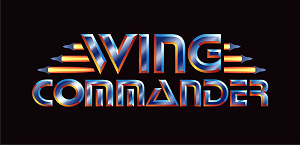
Wing Commander is a media franchise consisting of space combat simulation video games from Origin Systems, Inc., an animated television series, a feature film, a collectible card game, a series of novels, and action figures. The franchise originated in 1990 with the release of video game Wing Commander.

Francis Stanley "Gabby" Gabreski was an American career pilot in the United States Air Force who retired as a colonel after 26 years of military service. He was the top American and United States Army Air Forces fighter ace over Europe during World War II and a jet fighter ace with the Air Force in the Korean War.

General John Charles Meyer was an American World War II flying ace, and later the commander-in-chief of the Strategic Air Command (SAC) and director of the Joint Strategic Target Planning Staff at Offutt Air Force Base, Nebraska. SAC was the United States' major nuclear deterrent force with bombers, tankers and reconnaissance aircraft, and intercontinental ballistic missiles. The Joint Strategic Target Planning Staff coordinated the nation's nuclear war plans and developed the Single Integrated Operations Plan.

I-War is a space combat simulator developed by Particle Systems and published by Infogrames. The game was first published in November 1997 in Europe, and in late August of 1998 in North America.
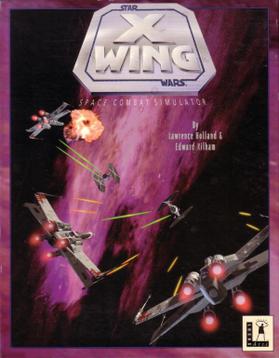
Star Wars: X-Wing is a space simulation video game, the first of the X-Wing combat flight simulation games series. The player's character flies starfighters, including the X-wing, for the Rebel Alliance. The narrative precedes and parallels the events of Star Wars Episode IV: A New Hope.
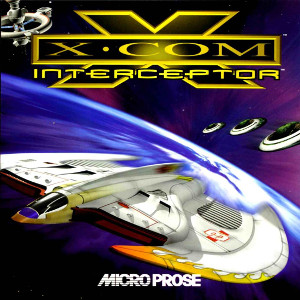
X-COM: Interceptor is the fourth main game in the X-COM series, developed and published by MicroProse in 1998. The game is a combination of many genres, including space flight simulation, business simulation game and strategy game elements. More specifically, the player's role includes managing a number of X-COM space stations, piloting starfighters during hostile encounters whilst co-ordinating wingmen, and managing resources and research. X-COM Interceptor, although released as the fourth game, is actually set before X-COM: Apocalypse, thus making it the third game in the chronological order. The game was re-released in 2008 for Steam and GamersGate, and again in 2016 on GOG.com.

Wing Commander is the first game in Chris Roberts' space flight simulation Wing Commander franchise by Origin Systems. The game was first released for MS-DOS on September 26, 1990 and was later ported to the Amiga, CD32 (256-color), Sega CD and the Super Nintendo Entertainment System, and re-released for the PC as Wing Commander I in 1994. An enhanced remake Super Wing Commander was made for the 3DO in 1994, and later ported to the Macintosh.

Wing Commander II: Vengeance of the Kilrathi is the first sequel in Chris Roberts' Wing Commander science fiction space combat simulator franchise of computer games, produced by Origin Systems.
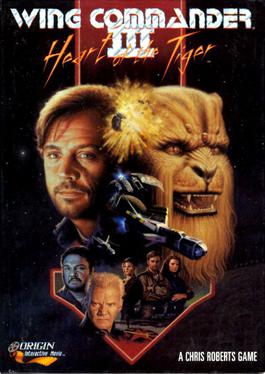
Wing Commander III: Heart of the Tiger is the third main game in Chris Roberts' Wing Commander science fiction space combat simulation video game series, developed and released by Origin Systems in December 1994. It was a departure from previous games in the series in that it uses extensive live action full-motion video to add an interactive movie-style presentation to the space combat gameplay, emphasized by its advertising slogan, "Don't watch the game, play the movie!". The game's more than two hours of video featured a number of prominent movie stars including Mark Hamill as Colonel Christopher "Maverick" Blair, Malcolm McDowell as Admiral Tolwyn, John Rhys-Davies as James "Paladin" Taggart and Thrakhath nar Kiranka, and Tom Wilson as Todd "Maniac" Marshall.
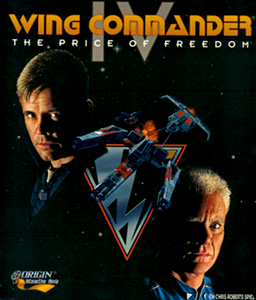
Wing Commander IV: The Price of Freedom is the fourth main game in the Wing Commander science fiction space combat simulator video game series, produced by Origin Systems and released by Electronic Arts for the PC in 1996 and the Sony PlayStation in 1997.
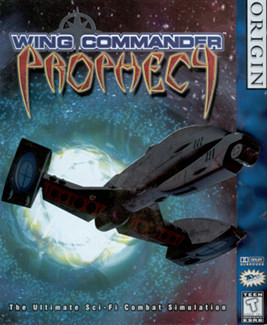
Wing Commander: Prophecy is the fifth installment in the Wing Commander science fiction space combat simulator franchise of computer games. The game was originally released in 1997 for Windows, produced by Origin Systems and distributed by Electronic Arts, and in 2003, a GBA conversion was produced by Italy-based Raylight Studios and distributed by Destination Software.

Joint Strike Fighter is a 1997 combat flight simulator designed by Innerloop Studios and published by Eidos Interactive. Innerloop produced the game chiefly to be a showcase for their cutting edge game engine, which they planned to license to other game developers. The game engine was later adapted to Project I.G.I..
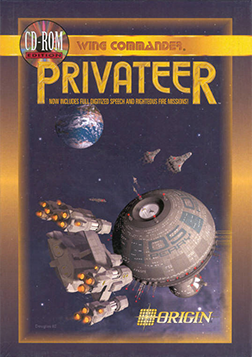
Wing Commander: Privateer is an adventure space trading and combat simulator computer game released by Origin Systems in September 1993. Privateer and its storyline is part of the Wing Commander series. The player takes the role of Grayson Burrows, a "privateer" who travels through the Gemini Sector, one of many sectors in the Wing Commander universe. Unlike Wing Commander, the player is no longer a navy pilot, but a freelancer who can choose to be a pirate, a merchant, a mercenary or any of the above in some combination. The player may follow the built-in plot but is free to adventure on his own, even after the plot has been completed.
StarWraith is a series of space combat simulators by StarWraith 3D Games.

Star Wars: TIE Fighter is a 1994 Star Wars space flight simulator and space combat video game, a sequel in the Star Wars: X-Wing series. It places the player in the role of an Imperial starfighter pilot during events that occur between The Empire Strikes Back and Return of the Jedi.
Star Wars: X-Wing is a series of space flight simulator video games based in the Star Wars media franchise that attempts to simulate the fictional experience of starfighter combat, while remaining faithful to the movies. The player took the role of a pilot of the Rebel Alliance, and, in later games, the Galactic Empire. To complete the games, players must complete missions such as simple dogfights with opposition starfighters, reconnaissance and inspection tasks, escort duty for freighters or capital ships, or attacks on larger opposition ships. In addition to dogfighting designed to resemble the free-wheeling duels of World War I, the games also offered the challenge of managing power resources and wingmen, and using weapons effectively.
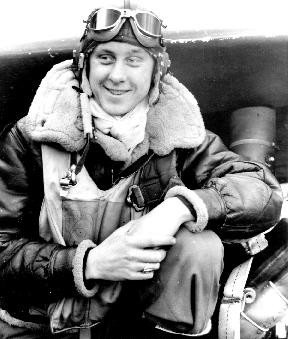
Harold Elwood "Bunny" Comstock was an American fighter ace in the 56th Fighter Group during World War II, and a career fighter pilot in the United States Air Force. After a test flight of the Republic P-47 Thunderbolt on 13 November 1942, Republic Aviation issued a press release on 1 December 1942 claiming that he and fellow pilot, Lieutenant Roger Dyar had exceeded the speed of sound.

Vermont Garrison was a career officer in the United States Air Force, and a flying ace credited with 17.33 victories in aerial combat. He was one of only seven Americans to achieve ace status during World War II, then again against jet fighter opposition during the Korean War. In 1966, Garrison participated in his third war, as vice commander of the 8th Tactical Fighter Wing, and flew a full tour of bombing and fighter missions over North Vietnam.
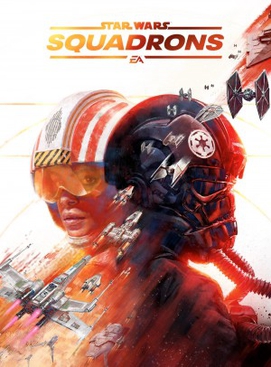
Star Wars: Squadrons is a space combat game set in the Star Wars universe developed by Motive Studio and published by Electronic Arts. It was released for PlayStation 4, Windows, and Xbox One, on October 2, 2020 and for Xbox Series X/S on December 3, 2020. The game features both multiplayer game modes and a single-player campaign. Set after Return of the Jedi, the campaign alternates between the New Republic's Vanguard Squadron and the Galactic Empire's Titan Squadron, both of which become involved with the Republic's Project Starhawk; Vanguard Squadron wants to ensure its completion, while Titan Squadron attempts to destroy it.


















